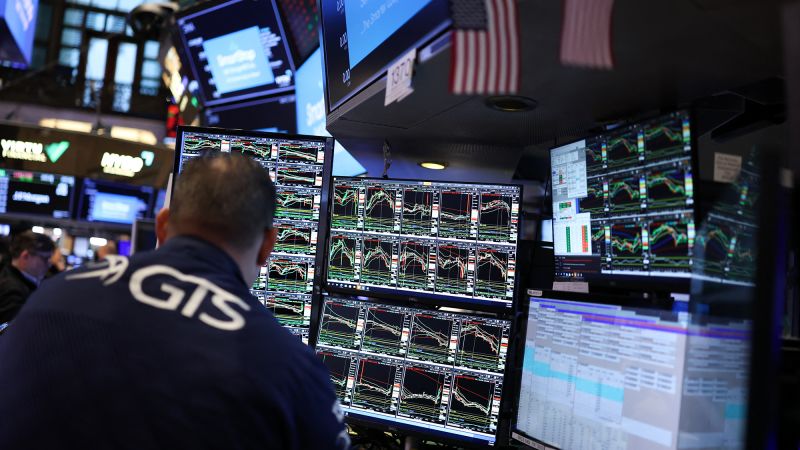US Stock Market Dips on Walmart’s Grim Outlook
The U.S. stock market experienced a notable decline on Thursday, primarily influenced by a concerning forecast from Walmart, the world’s largest retailer. The retail giant hinted that 2025 could be particularly challenging, anticipating a slowdown in sales this year. This news has raised alarms among investors, who are increasingly worried that consumers may be running out of financial steam.
Stock Market Reaction
The Dow Jones Industrial Average plummeted by over 650 points, or 1.5%, at one point during the day, ultimately closing down by 451 points. Other major indexes, including the S&P 500 and Nasdaq Composite, also faced declines of 0.43% and 0.47%, respectively. Walmart’s stock took a significant hit, finishing the day down 6.5%. This downturn comes amid growing concerns about a potential downturn in consumer spending, which constitutes roughly two-thirds of the U.S. economy.
Consumer Spending Trends
Walmart’s Chief Financial Officer, John David Rainey, highlighted the "uncertainties related to consumer behavior and global economic conditions." The impacts of rising inflation and prolonged elevated interest rates continue to burden American shoppers. The situation could worsen if former President Donald Trump follows through on his proposed tariffs, which could further strain consumer wallets.
Tariff Implications
In the early days of his presidency, Trump implemented a 10% tariff on Chinese goods and a 25% tariff on steel and aluminum imports. He has also indicated plans to levy tariffs on goods from Mexico and Canada starting in March, and has tasked his economic advisors with exploring "reciprocal tariffs" against all trading partners. While Walmart’s enormous scale may offer some protection against these tariffs, the company’s anticipated slowdown signals potential trouble ahead for smaller retailers and the broader industry.
Decline in Retail Sales
Recent data from the Commerce Department revealed a 0.9% drop in retail sales last month, indicating that consumers are tightening their belts across various categories. This figure starkly contrasts with December’s performance and falls well below economists’ predictions of a 0.4% decline. Notably, these numbers are adjusted for seasonal fluctuations but do not account for inflation.
Consumer Sentiment and Inflation Expectations
Additionally, a recent survey by the University of Michigan indicates that American consumers’ inflation expectations for the year ahead have surged to their highest levels since November 2023. Coupled with a decline in consumer sentiment, these trends suggest that many shoppers are becoming increasingly cautious about their spending habits.
In summary, as the stock market reacts to Walmart’s alarming forecast and broader economic indicators, the outlook for retailers—and consumers—remains uncertain. The potential for continued inflation and shifting consumer behavior could shape the economic landscape for years to come.










